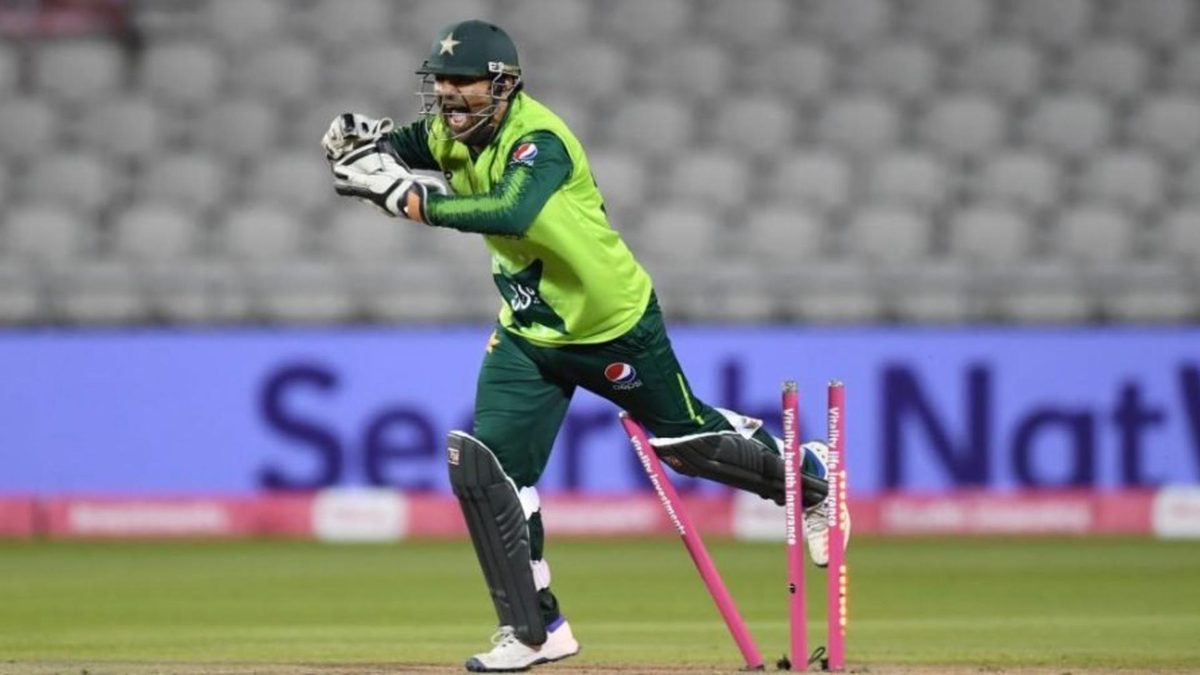
Sarfaraz Ahmed, once Pakistan team’s dynamic leader, was recently demoted to category C in the PCB central contracts for 2021/22. With Mohammad Rizwan striking gold in recent times, Rohit Sankar wonders if Sarfaraz has a future at all in the national team.
Subscribe to the Wisden Cricket YouTube channel for post-match awards, player interviews, analysis and much more.
Throughout 2020, Sarfaraz Ahmed, who had led the Pakistan limited-overs side in 22 of their 35 matches the previous year, played just one match for Pakistan. He was sacked from captaincy, yet is still around in the national team (backed by the head coach no less).
Before you question Pakistan cricket and its fascinating ways, wait till you get to the actual interesting bit.
It took the head coach and captain some effort to convince Sarfaraz, fully fit and all that, to play that solitary game in 2020, a T20I in England. Losing his place to someone who had been his understudy, it wouldn’t have been easy for Sarfaraz to be on the sidelines, watching the rookie grow from a bench-warmer to A-class (no, literally: Mohammad Rizwan is among four Category A players in the contract).
Why then would he not grab the one opportunity coming his way, especially if he aspires to make it to Pakistan’s T20 World Cup team later this year? After all, it’s possibly the only format where he even stands a chance to extend his career.
Sarfaraz’s thinking seemed to be different though. In the words of head coach Misbah-ul-Haq during an interview with ESPNCricinfo, Sarfaraz “raised genuine reservations over being asked to play in the last match of the tour.” The 2017 Champions Trophy winning skipper feared that his performances would be judged on that one game and although he did eventually played the match, he did not get to bat.
Since then, Sarfaraz has played two matches: an ODI against South Africa and a T20I against Zimbabwe. He did not get to bat in one and made 13 in the other. It’s been hard getting chances, especially with Rizwan setting the stage alight with stunning performances across formats.
With Pakistan set to tour England for a limited-overs series, Sarfaraz continues to remain in the side. It might well be his final tour with the Pakistan team, because, let’s face it, he isn’t getting any younger, he’s hardly getting game time, and his on-field antics have attracted more attention than his batting in the last couple of years. But most of all because Pakistan have a third wicketkeeper on tour in Azam Khan.
As if Rizwan’s meteoric rise wasn’t enough, Sarfaraz now has more competition in the talented Azam Khan, whose Pakistan Super League exploits led to his national team selection, earning mixed responses from social media, primarily because he is the son of former Pakistan wicketkeeper and Quetta Gladiators head coach (where Azam Khan plays in the PSL), Moin Khan, and also because of his weight and fitness, which have become talking points in recent months.
Azam’s inclusion dents Sarfaraz’s chances further, putting a huge question mark over his role in the Pakistan team going forward. At 34, is he the backup wicketkeeper Pakistan would want in the next few years with major ICC tournaments coming up?
His wicketkeeping, while being efficient, was never top-notch and in a side that has more than its fair share of batting anchors, Sarfaraz is largely surplus to requirements. He hasn’t been breaking the door down with his performances either. In PSL 2020, he made runs at an average of 21.14 and a strike-rate of 128.7. That went up to 45.86 and 137.7 in the recently concluded PSL edition, but those numbers need a closer inspection.
Outside the one spectacular knock (81 off 40 v Peshawar) before the PSL was initially called off, the other big knock came last month in his final T20 game: a 33-ball 51. Impressive overall strike-rate, but break it down into what the team needed then and Sarfaraz actually pegged the side back.
From 24 off 23 balls, Sarfaraz, who had walked in immediately after the powerplay, made 27 off his last 10 balls when the required run rate, thanks in part to him, had already gone up to 16 and more.
Sarfaraz’s strength has always been his strike rotation, and while he often languished, bizarrely, in the lower middle-order where his lack of big-hitting skills — he has 19 sixes in 53 T20 games since the start of 2019 — Pakistan can no longer afford to do that. The top four in the T20I setup already has Babar Azam and Mohammad Rizwan as players capable of playing the anchor role and does not need another.
This is similar in ODIs too. Since the end of the 2015 World Cup, Sarfaraz has hit just six sixes in ODIs, yet 52 of his 63 innings have come from No.5 or lower, a position ideally occupied by a better boundary hitter.
Rizwan’s rise has left Sarfaraz with the backup role, and it would inevitably be few and far between, just like the T20I in England last year. To make matters worse, Sarfaraz missed a stumping chance in that game, which allowed Moeen Ali, who made 61 off 33 balls, to go ahead and nearly make a game-changing difference. Severe criticism came his way, and it felt like the aura of the Sarfaraz was old was indeed dimming.
It’s understandable why Sarfaraz was hesitant to play the last game of that tour, and he might indeed be judged on these one-off matches. This is true for any backup, though, and given his age, Pakistan are better off giving these rare opportunities to someone looking to break into the setup. Sarfaraz has served Pakistan Cricket well, but it’s time to welcome a new face rather than keep someone who is certain to leave it in the next couple of years at the most, and not get enough opportunities until then.








